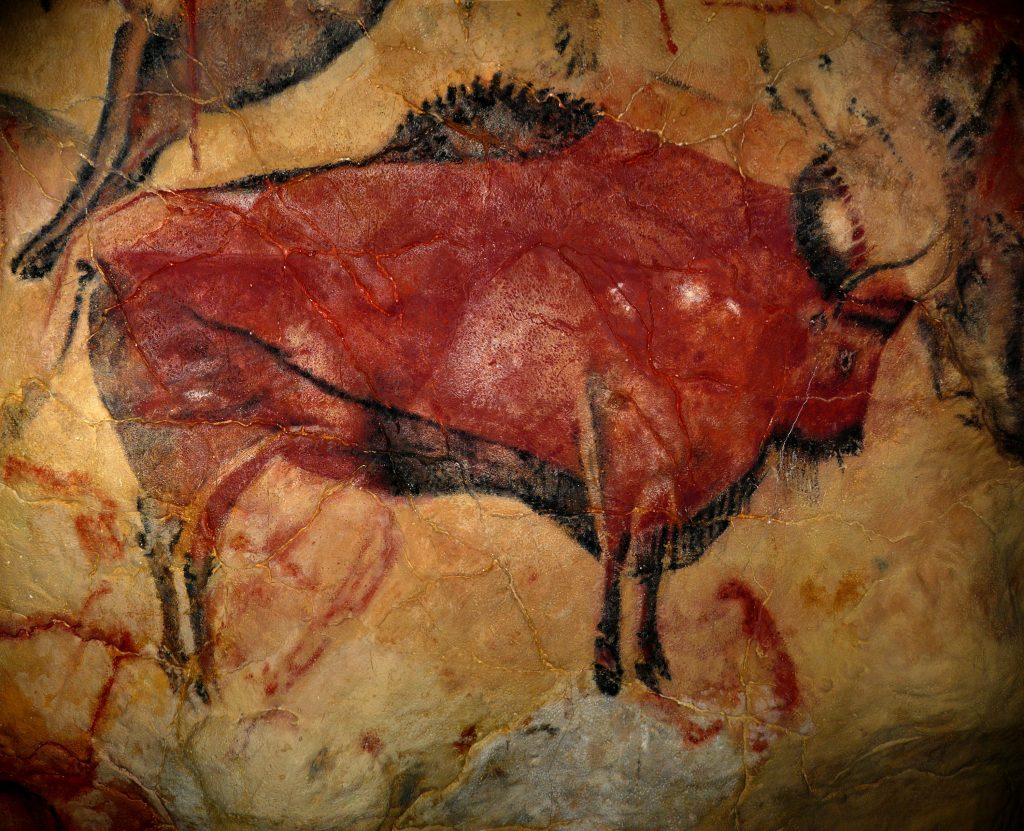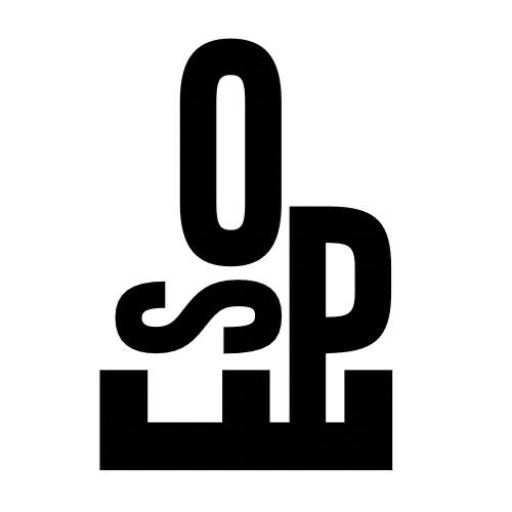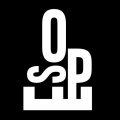Upper Paleolithic Cave Art:
Altamira Bison in the great hall of the Altamira Cave in Spain.

Reproduction of a bison of the cave of Altamira
The Cave of Altamira is a cave in Cantabria, Spain, famous for its Upper Paleolithic cave paintings featuring drawings and polychrome rock paintings of wild mammals and human hands. Altamira was the first cave in which prehistoric cave paintings were discovered.
The Altamira Bison is part of a large series of works found in the cave of Altamira. The drawings are dated circa 17000 – circa 12000 years ago, a time period known as the Upper Paleolithic or Magdalenian era which refers to refers to one of the later archaeological cultures of the Upper Paleolithic in Western Europe.
The Magdalenian era (as known as ‘age of the reindeer’) was the final major European culture of the Upper Paleolithic period. A time characterized by composite or specialized tools, tailored clothing, geometric and representational cave art and for beautiful decorative work in bone and ivory. It witnessed the full-flowering of cave painting, most exquisitely in the cave sanctuaries of Lascaux and Altamira, both noted for their large polychrome murals and decorated ceilings. Magdalenian painters used colour pigmentations to a far greater extent than their predecessors producing pictographs i.e. paintings or drawings that have been placed onto a rock face. Such artworks were made with mineral earths and other natural compounds. The predominantly used colours are red, black and white. Red paint is usually attained through the use of ground ochre, while black paint is typically composed of charcoal or manganese. The white paint was created from natural chalk, kaolinite clay or diatomaceous earth. Once the pigments had been obtained, they would be ground and mixed with a liquid, such as water, blood, urine, or egg yolk, and then applied to the stone as paint using a brush, fingers, or a stamp. Alternately, the pigment could have been applied on dry, such as with a stick of charcoal; spray painting techniques were also known to be used, for example, to produce a negative image of the hand by spraying dry pigment through a tube over a hand placed on the wall.
Licensing:
This image is attributed to Rameessos the copyright owner and The ESOP fully recognises its release by the copyright owner into the public domain. The image was downloaded from Wikipedia on 25th July 2016 under this license. For more details see https://commons.wikimedia.org/wiki/File:AltamiraBison.jpg

